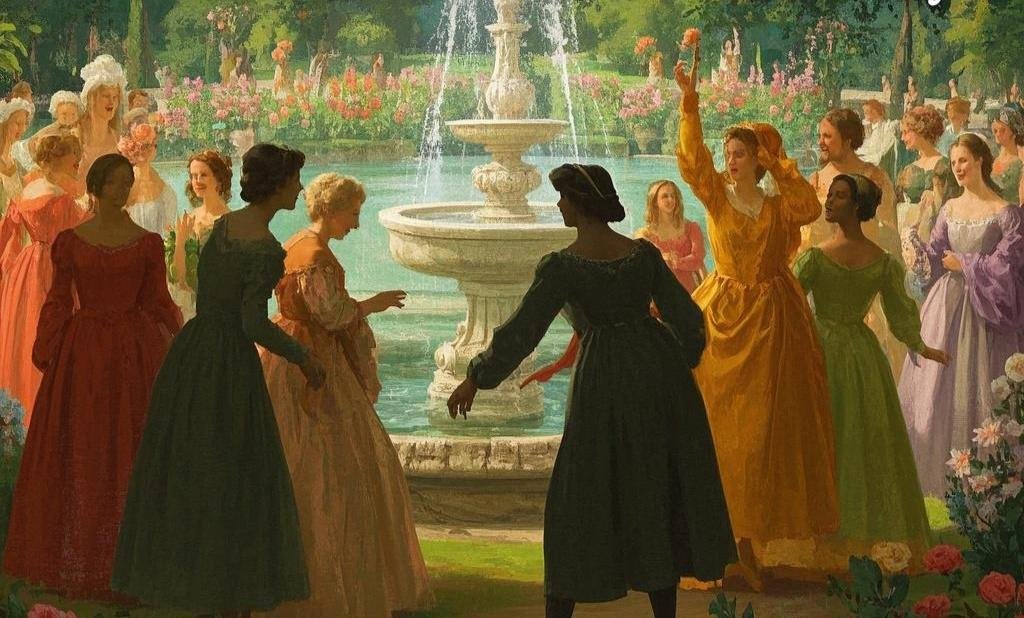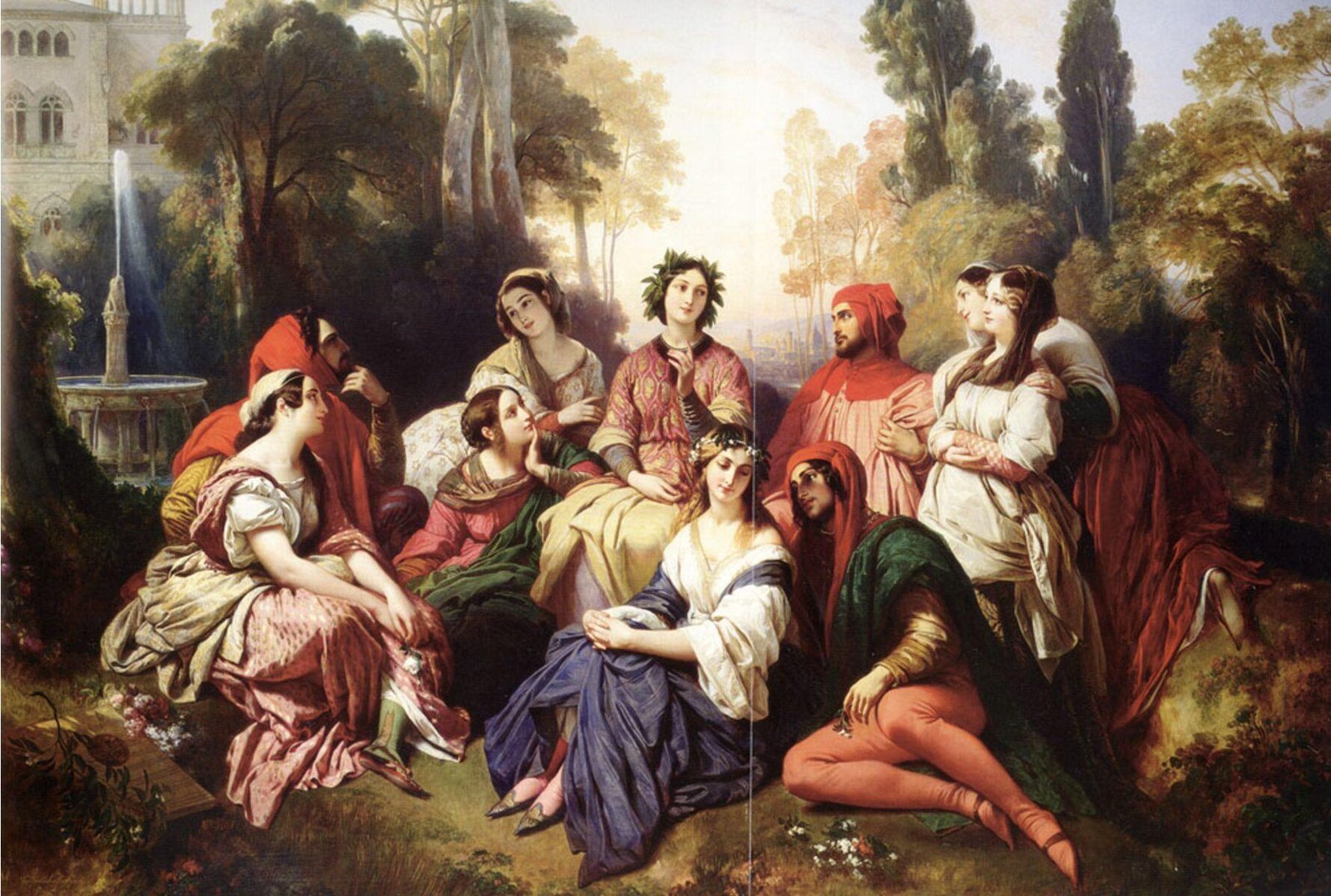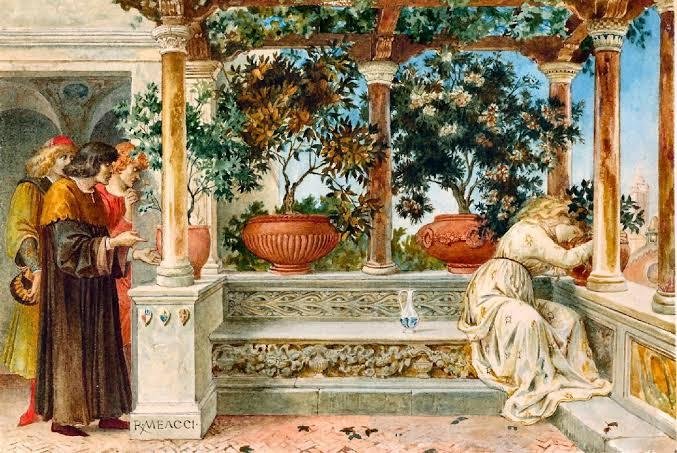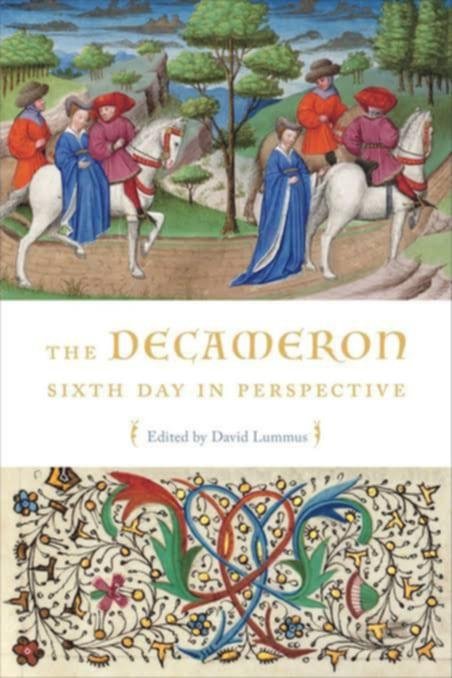Paradise Found: Nature and Community in The Decameron's Third Day

Introduction:
Boccaccio's Decameron is renowned for its vivid storytelling and exploration of human nature. Day Three, governed by Neifile, focuses on those who, through diligence, have achieved a desired goal or recovered a loss. However, this day's opening scene transcends the thematic focus of the individual stories it precedes. Instead, it serves as a powerful illustration of the restorative power of nature and the importance of communal joy, setting the stage for the tales to follow. This analysis will examine the literary techniques employed to create this idyllic setting, the symbolic significance of the garden, and the lasting relevance of this passage.
Summary:
The passage depicts a group, led by the queen, journeying to a magnificent palace. They explore the palace's opulent interiors and then discover a breathtaking garden—a meticulously designed space overflowing with fragrant flowers, blossoming vines, and a stunning central fountain. The garden teems with wildlife, seemingly tame and at peace. The group revels in the beauty, engaging in singing, dancing, feasting, and leisurely activities. The scene culminates with the characters preparing to share stories, their spirits uplifted by their shared experience in this earthly paradise.
Analysis:
Boccaccio masterfully employs sensory details to immerse the reader in the garden's beauty. The descriptions are rich and profuse, appealing to sight, smell, and sound. The "vermeil" dawn transitioning to "orange-tawny," the "rare savour" of blossoming vines mingling with other sweet scents, the "delectable sound" of the fountain—all contribute to an overwhelming sensory experience. This detailed description is not merely decorative; it underscores the restorative power of nature and its ability to uplift the human spirit.
The garden itself functions as a powerful symbol. It represents not only physical beauty but also a state of harmony and abundance. The meticulously arranged paths, the profusion of flora and fauna, and the carefully engineered waterworks all suggest a level of human artistry and control over nature, yet this control serves only to enhance the natural beauty. It is a microcosm of an ideal society, where individuals coexist peacefully and joyfully, appreciating the beauty around them.
The communal aspect of the experience is equally significant. The group's shared delight in the garden's beauty fosters a sense of unity and camaraderie. Their collective appreciation of the landscape, their shared activities (singing, dancing, feasting), and their anticipation of storytelling all highlight the importance of human connection and shared experience. This communal joy stands in stark contrast to the plague-ridden world outside the palace walls, reinforcing the idea that human connection and the appreciation of beauty can provide solace and strength in times of adversity.
Furthermore, the carefully orchestrated transition from the palace to the garden subtly emphasizes the shift from the artificial to the natural. The palace, while opulent, is a constructed environment. The garden, however, represents a more organic, less contrived beauty. This transition mirrors the characters' emotional journey—from a state of relative formality to one of relaxed joy and freedom.
Personal Response:
This passage resonated deeply with me due to its evocative imagery and the palpable sense of joy it conveys. The detailed descriptions transported me to the garden, allowing me to experience its beauty vicariously. The harmonious blend of nature and human activity created a sense of peace and contentment, a stark contrast to the often-chaotic realities of modern life. The passage’s emphasis on communal joy and appreciation for the simple pleasures of life served as a powerful reminder of the importance of these elements in our own lives.
Conclusion:
The opening scene of Day Three in The Decameron is far more than a mere setting; it is a carefully crafted tableau that underscores the restorative power of nature and the importance of communal joy. Boccaccio’s masterful use of sensory details, symbolism, and narrative structure creates a powerful and enduring image of an earthly paradise. The passage's enduring relevance lies in its celebration of human connection and its reminder of the simple pleasures that can bring joy and solace, even in the face of adversity. It serves as a timeless testament to the power of beauty and the importance of finding harmony between humanity and the natural world.








